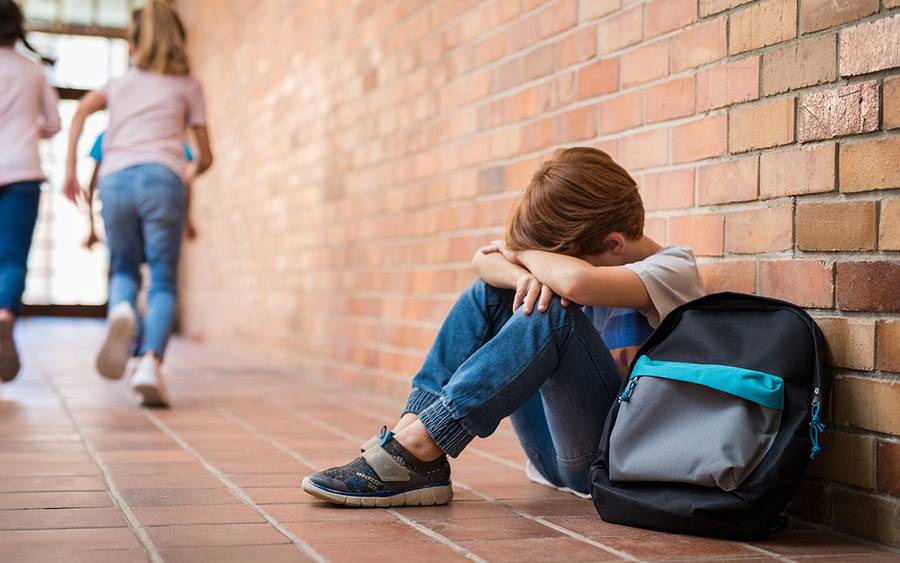How to Prevent Bullying
Four strategies to stop or prevent bullying at school and online

Four strategies to stop or prevent bullying at school and online
Bullying should never be ignored. While it is a common problem, it should never be seen as a normal part of childhood. It’s not okay to explain it away as “kids just being kids.”
Bullying can have serious consequences that impacts learning, mental and physical health.
One in five high school students reports being bullied at school, according to the Centers for Disease Control and Prevention (CDC). One in six high school students reports being bullied electronically, commonly known as cyberbullying, according to the CDC.
Parents, school staff and other adults can help prevent or stop bullying. “Children should always be encouraged to ask for help from an adult they trust,” says Brian Scull, MD, a pediatrician at Scripps Coastal Medical Center Hillcrest.
“Children should understand that bullying is wrong and that not saying anything allows the bully to think it’s OK to keep treating people that way,” Dr. Scull says. “When adults get involved, it also sends the message that bullying is not acceptable and will not be tolerated.”
The following four bullying prevention strategies can help.
1. Talk about it
Children look to their parents and other caregivers for help and advice. So, engage your child and explain bullying.
“Spend some time every day touching base with your child and ask open-ended questions about their social life. Talk about bullying directly so that you can understand if and how it is affecting your kid,” says Dr. Scull.
Ask your child who they spend time with at school, what they do in between classes and at recess and who they hang out with. If you learn there is an issue at school, discuss it with your child’s teachers and the principal to figure out a solution.
Common types of bullying include:
- Physical, including hitting, kicking and tripping
- Verbal, including name-calling and teasing
- Social, including spreading rumors and excluding from group
- Damage to property of the victim
2. Teach your child how to respond to a bully
Children need help learning how to recognize and avoid situations where bullying occurs.
If they are not around an adult who can help, they should know to respond to a bully in a calm, clear voice or to simply walk away and stay away.
Some phrases they can use to address the bully include:
- “I don’t like what you are doing.”
- “Please do not talk to me like that.”
- “Stop doing that now.”
“Bullies like to scare their victims and try to get them to cry or become visibly upset,” says Dr. Scull. “If your child cries, that will encourage the bully to continue. A child who isn’t easily flustered has a better chance of staying off a bully’s radar.”
If your child is not used to speaking firmly, rehearse the situation.
3. Teach your child about cyberbullying
Cyberbullying is a type of bullying done online or through text messages or emails. Cyberbullies use these platforms to intimidate, harass or threaten someone.
“Cyberbullying is as harmful as physical bullying,” says Dr. Scull. “Parents can stop or prevent it by teaching their child not to post or share anything that could hurt or embarrass anyone.”
Children who are targets of cyberbullying can get it to stop by:
- Ignoring the messages and not respond
- Cutting off communication by blocking email address, phone number or whatever communication method they are using
- Saving the evidence of cyberbullying, such as emails or text messages, and reporting it so it can be addressed
4. Stand up for others
Kids who are bullied often feel alone and ashamed, especially if it happens around others. Kids who see someone bullied can make a difference. They can intervene. These are ways to safely do this:
- Changing the subject or question the bullying behavior
- Using humor to redirect the conversation
- Intervening as a group to show that several people don’t agree with the bullying
- Walking with the target of the bullying to help diffuse the situation
- Making sure the person bullied is okay
- Getting help from adults
“Talk with your child about being a friend to someone who is being bullied and reporting it to a trusted adult, teacher or administrator,” Dr. Scull says.